Teaching Magic E Words – The Vowel-Consonant-E Syllable + FREE Charts
This post may contain affiliate links, and I will earn a commission if you purchase through these links. Please read the disclosure policy for more details.
Next up in my syllables series is the vowel-consonant-e syllable, also known as CVCe, VCe, Magic E, Silent E, Sneaky E, Bossy E, and a few other fun names. In this post, I’ll explain what the vowel-consonant-e syllable is and how to teach it using multisensory methods so your students can read silent e words.
If you missed the previous syllable posts, you can find them all here.
What is the vowel-consonant-e syllable?
Vowel-consonant-e syllables end in a final silent e with a consonant just before the silent e. This silent e makes the vowel before it have a long sound.

How to teach Magic E Words
Other Reasons for Silent E
Before I get into how to teach VCe words, I want to point out that silent e does not only appear in words to make the previous vowel make its long sound. It also has 6 other jobs, such as making c and g soft, showing that a word isn’t plural, and more.
Therefore, it’s important that you don’t tell students this is the ONLY reason they’ll see a silent final e.
Read more: The Many Jobs of Silent E
The Magic E Story
My favorite way to introduce VCe words to my students is to tell them the Magic E story. The gist is that the Magic e has special powers and it jumps over the consonant to help the vowel before it say its name. They really like this story and it sticks with them.
One thing to point out to them is that Magic e can only jump over 1 consonant. So if they come across a word like edge, they’ll know not to apply the Magic e rule because there are two consonants between the first vowel and the e.

Marking Vowels and Consonants
It’s also very important to get students into the habit of marking the vowel and consonants. I usually have them ‘spot and dot’ the vowels above and label the consonants and vowels below the word.
This means they put a dot over the vowels to mark them. Then they write V or C under the letters in the word as shown below. This helps them to clearly see the pattern vce.

Introduce 1 long vowel at a time
This is more for struggling readers as it always helps to focus on one sound at a time. Start with a-e words like lake, fame, ate.
From there go on to the other vowels only adding one at a time and continuing to review the previous.
Silent E Words List
I like to have this handy printable silent e words list, which you can download below.
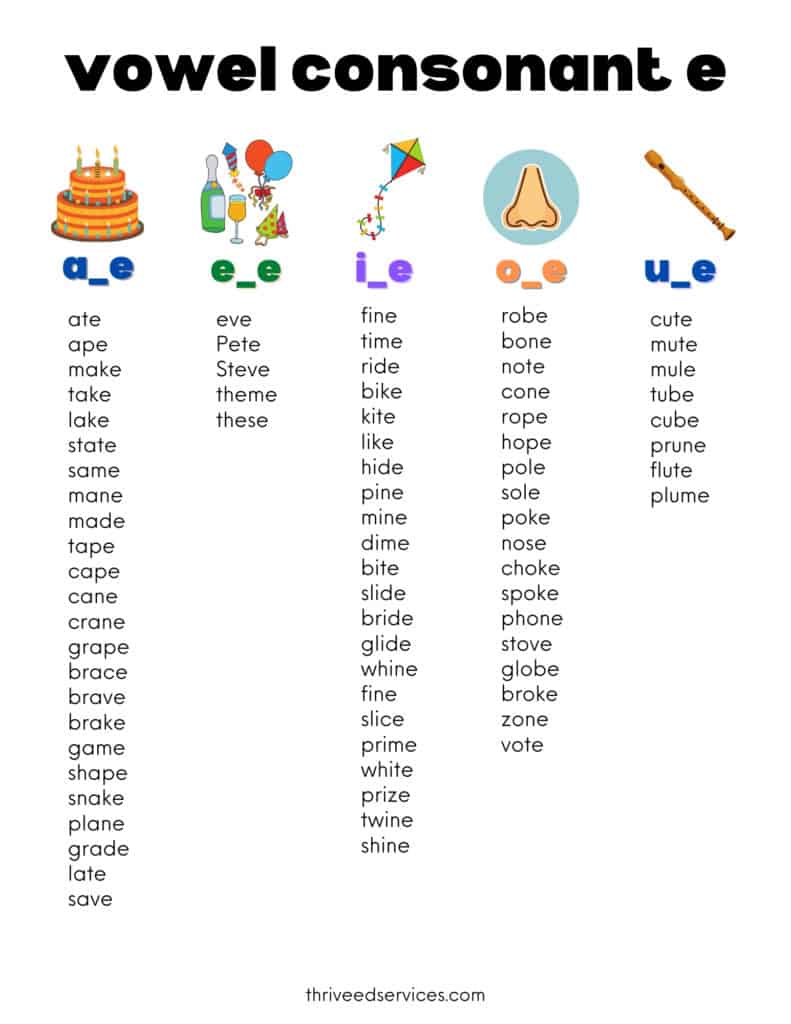
Vowel-Consonant-E Activities
There are a variety of multisensory activities you can use to teach and reinforce the VCe syllable. Below are a few easy options.
Create CVCe words from CVC words
Transform CVC words into CVCe words. I like to do blending drills with CVC words and I just add an E to the end to see if my students can read the new silent e word.
Using phonogram cards, letter tiles, blending boards is an easy way to do this. It’s also very helpful to use nonsense words.
Here is an example with a nonsense word:
- Show the word sen
- Have the student read the word. They should pronounce it as s/e/n with a short e sound.
- Add an e to the end to make the nonsense word sene
- Have the student read the new word which would now read as s/ee/n with a long e sound.

Play games using Silent E words
You can transform any game into a VCe words game by having students read CVCE words during their turn. For example, I sometimes use Connect 4 along with a deck of CVC and VCE words. On each turn, you pick up a card and read it aloud, then add or delete the final e to make a new word.
I created the Long Vowels Bundle below full of activities for all long vowels, including silent e words.
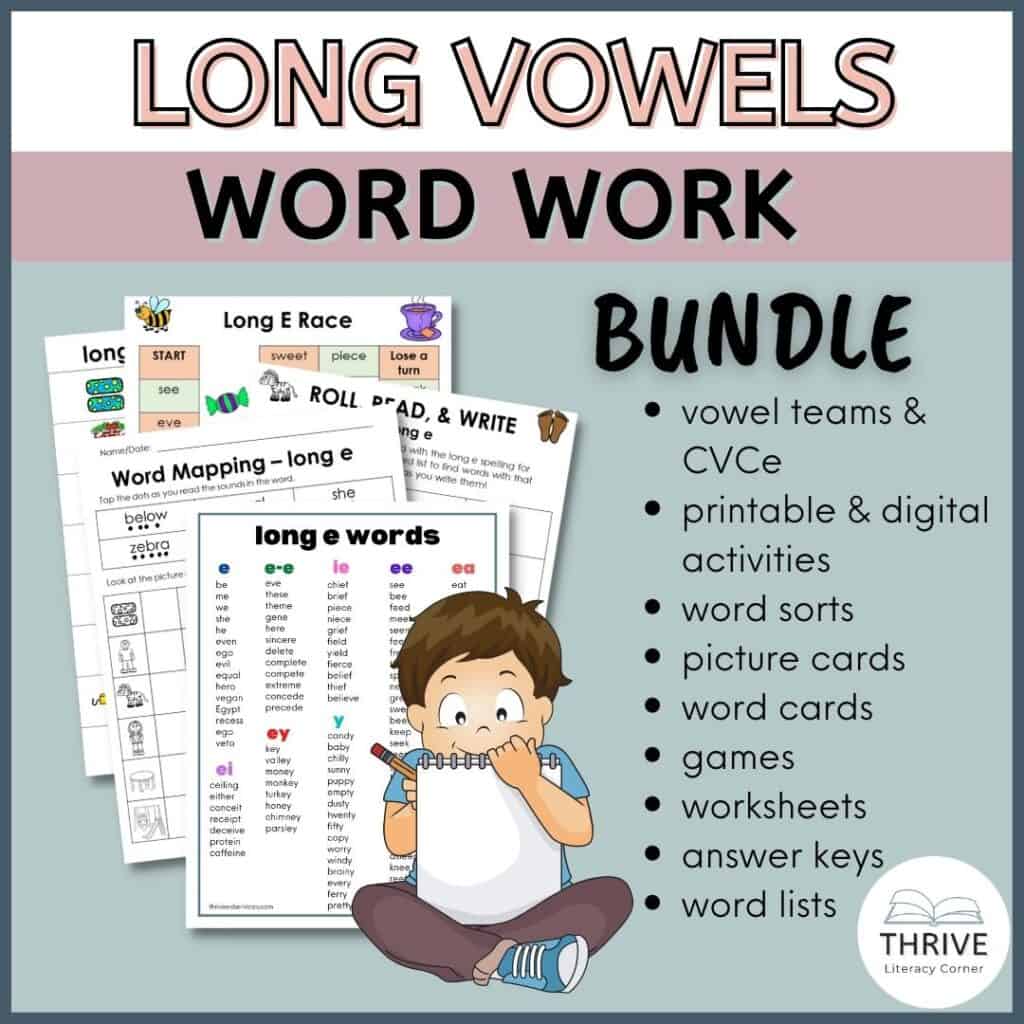
You can also search for or make VCE board games for 2 or more players. My students love this quick Magic E game and it’s easy to add to any lesson.
Search Teachers Pay Teachers for silent e, cvce, vowel-consonant-e, or Magic e activities and you’ll find many free and paid options.
Create a deck of CVC and CVCe words with corresponding words like cam/came and have students match them or play memory.
Regardless of the game you play it’s very important to have students always read aloud as the focus is learning the VCE pattern. Make students read the target words aloud and change them from CVC to VCE or VCE to CVC.

Diagram VCe words
Students can diagram VCe words by marking vowels and consonants, then drawing the little arrow from the e jumping over the consonant to the vowel and drawing the horizontal line over the vowel (macron) indicating the long sound it has.
Make this even better by having students say the story as they do the action. “The e jumps over the consonant to help the vowel say its name”. Then of course have them read the word aloud.
Another tip is color coding vowels and consonants. Choose a color for each and stick to that color for every activity. I like to do red vowels and black consonants. When my students label the vowels and consonants they have black and red markers to write the V and C underneath in the corresponding color.

Conclusion
Make sure to download my free 6 syllable types posters for your classroom from my freebies library, which includes the VCe syllable poster shown above. I like to print out the reference sheet with all 6 syllable types for my students and place it in a plastic sleeve for them to reference as needed.
Check out all my syllable posts here.
Want to remember this? Save All About The Vowel-Consonant-E Syllable to your favorite Pinterest board!






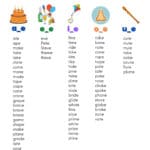
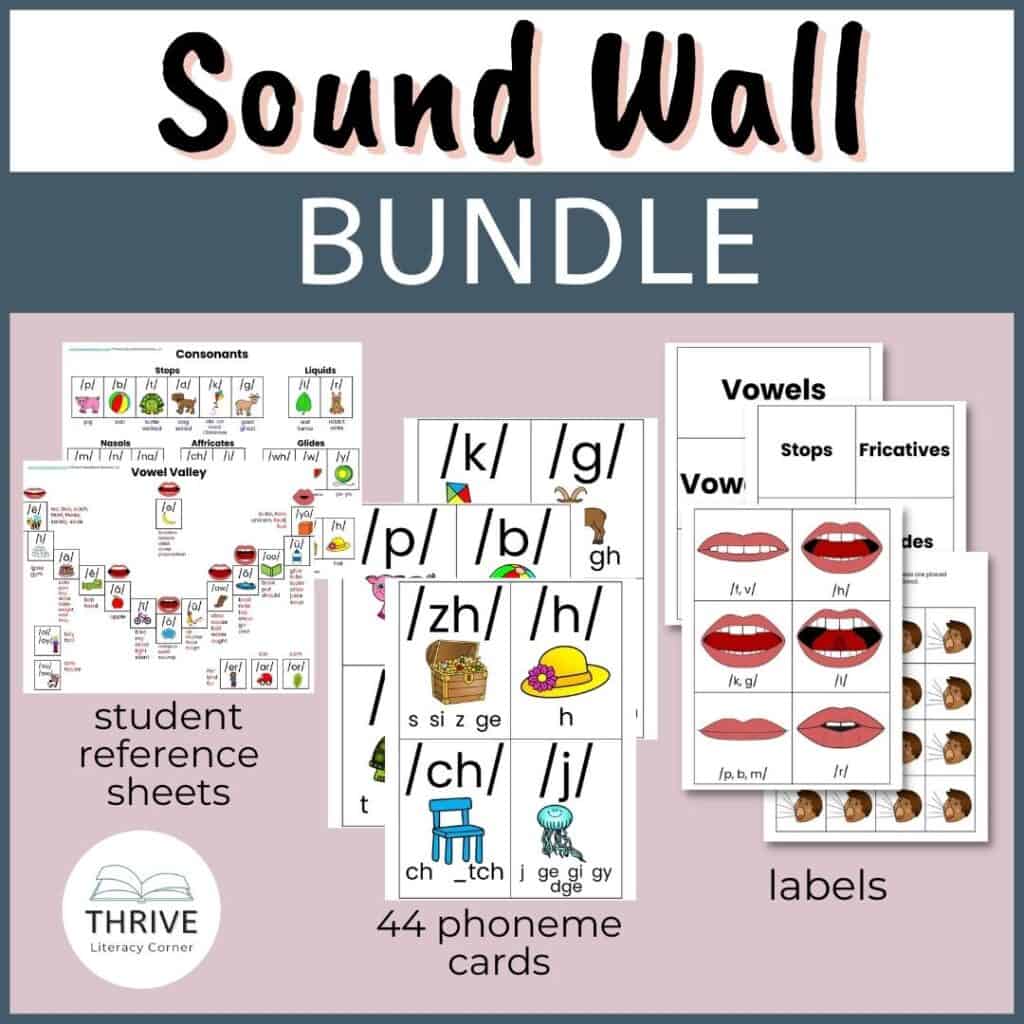
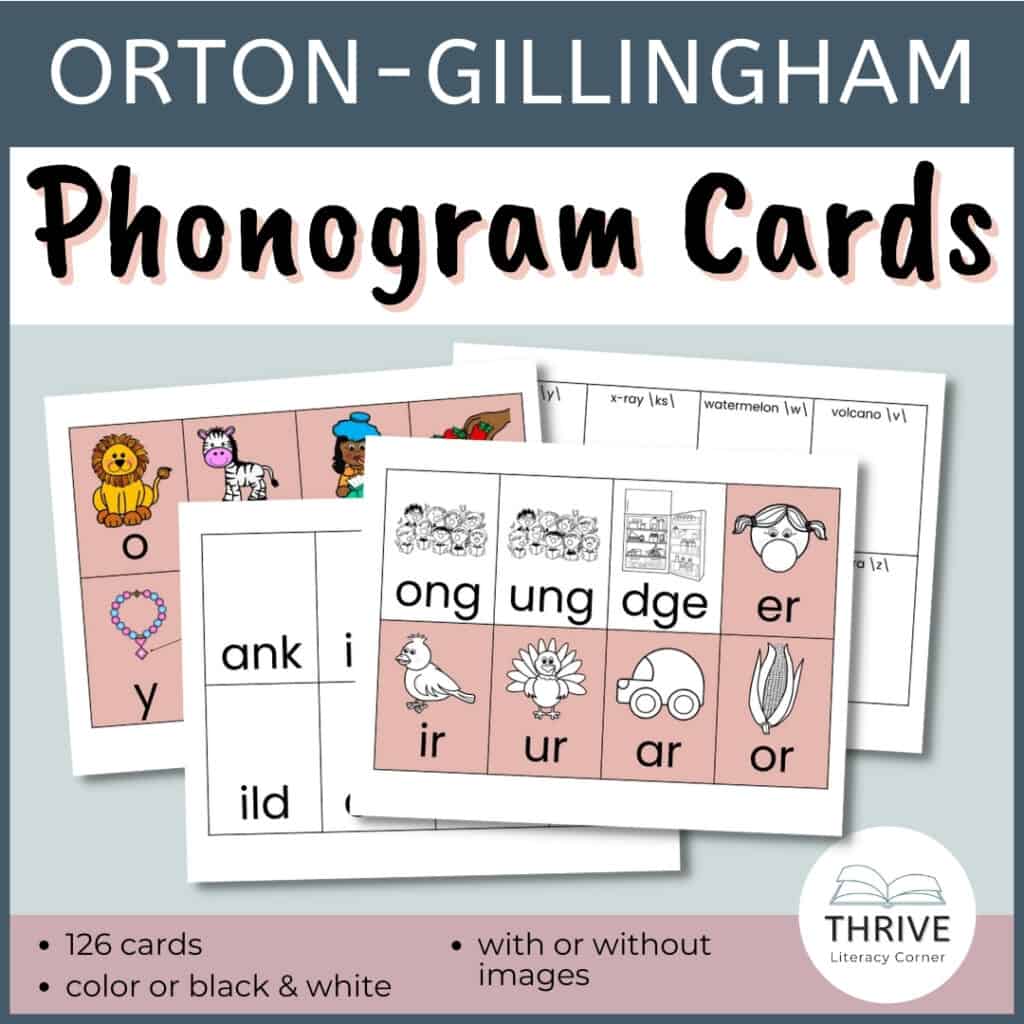
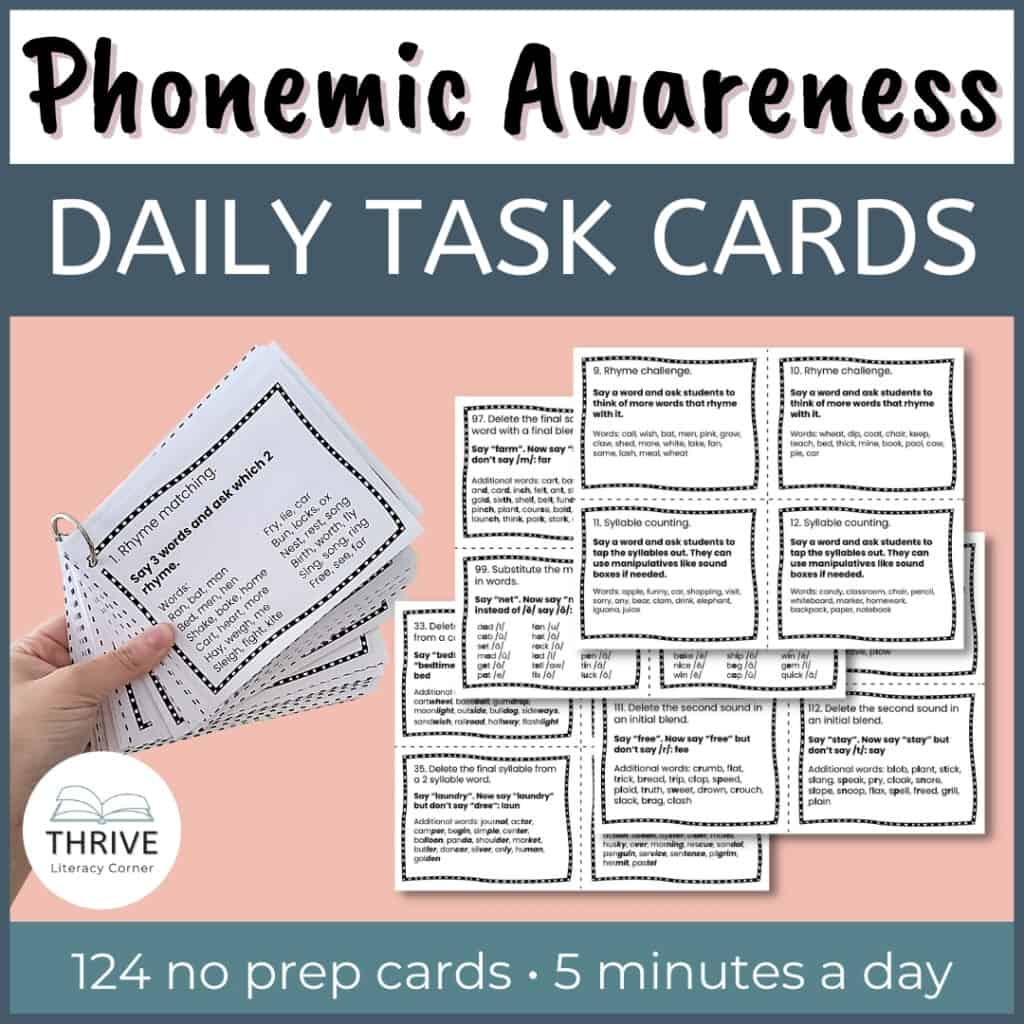
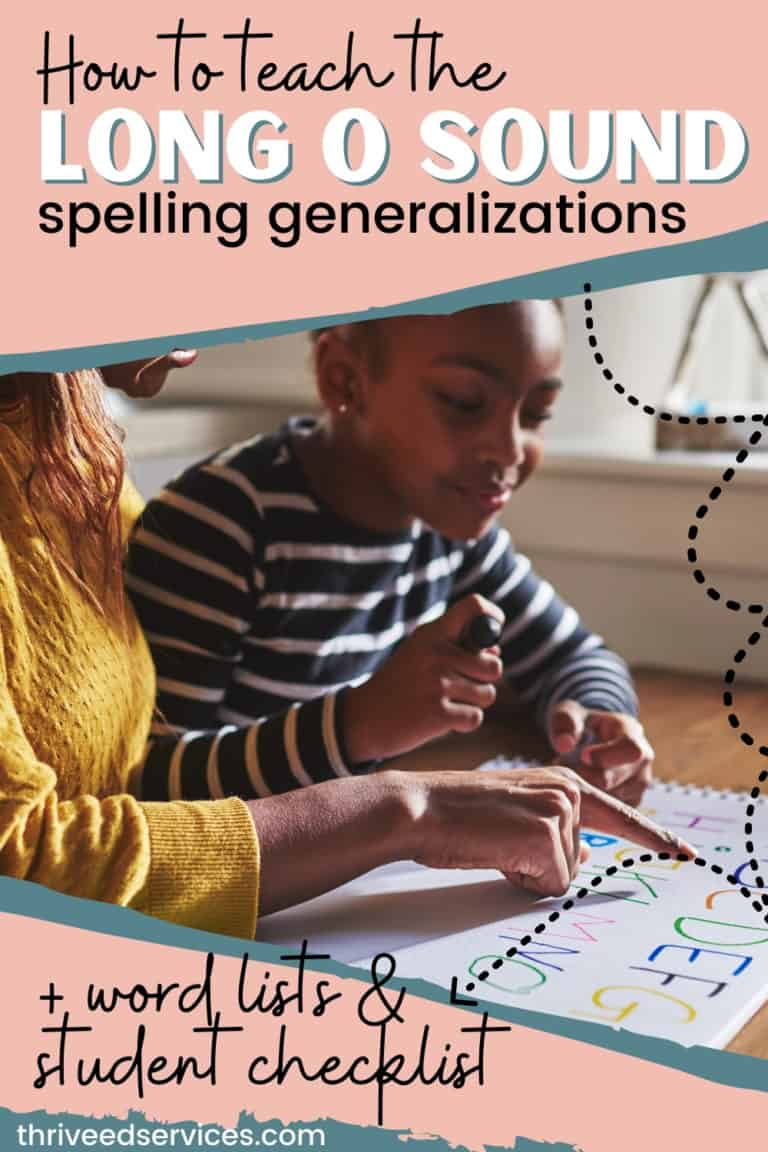

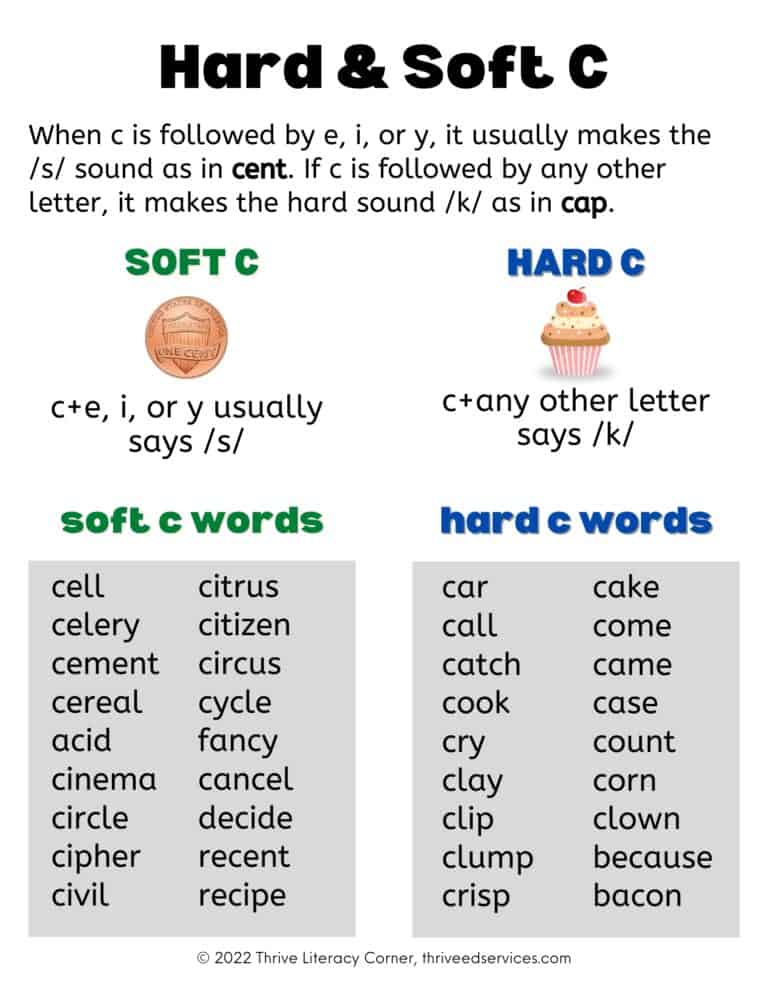
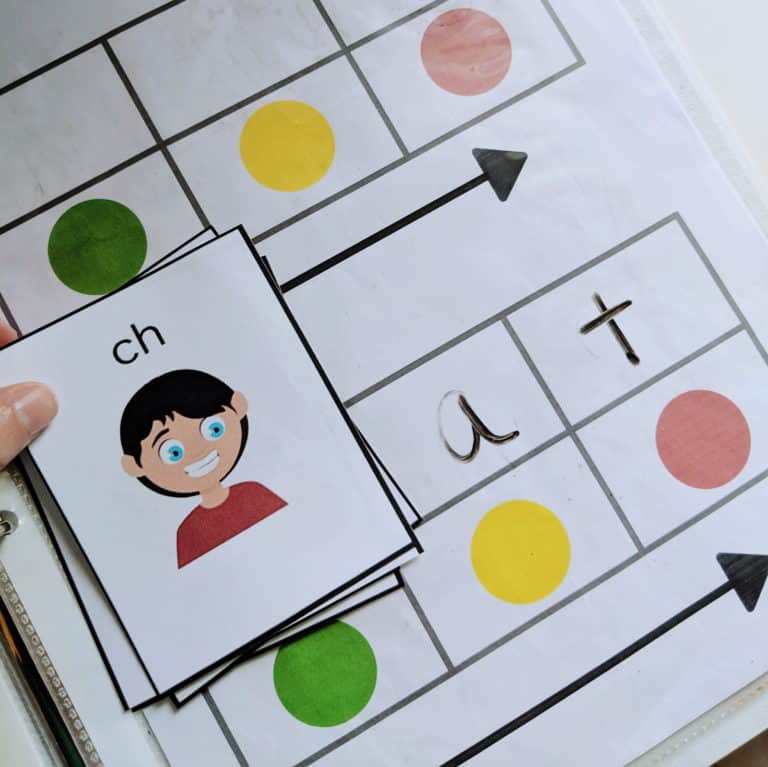
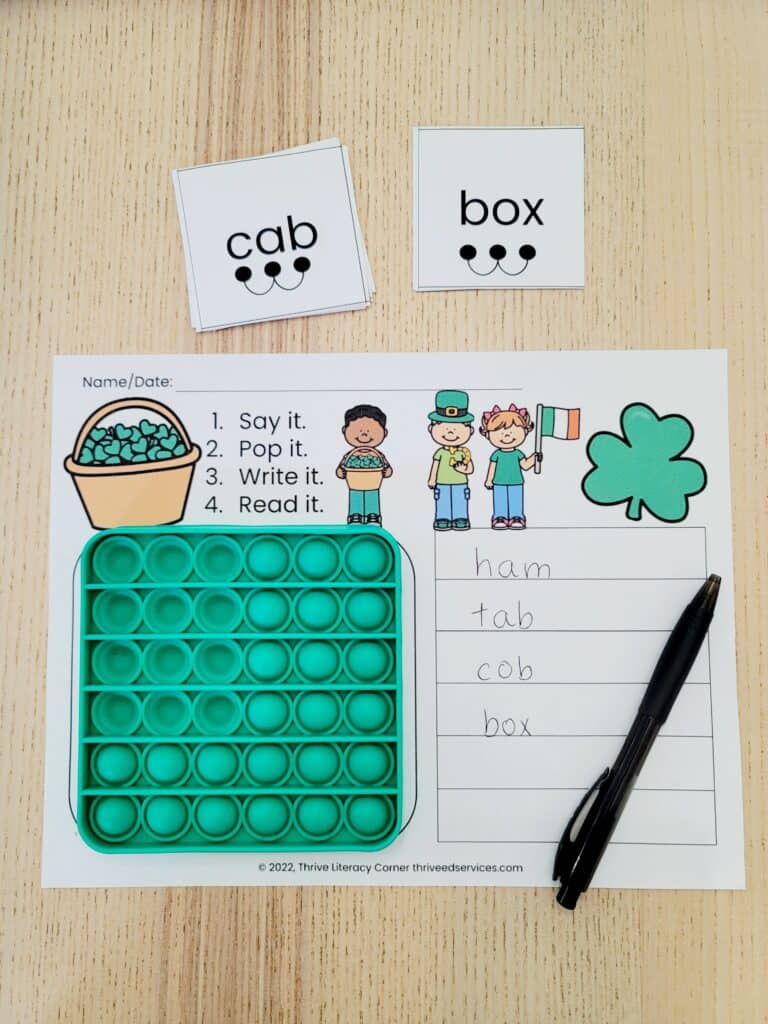
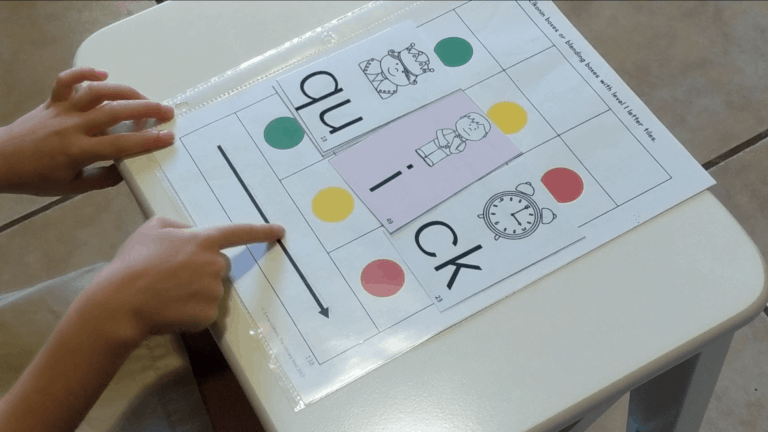
Very impressive way of explanation. I really liked.
Thank you! Glad you found it helpful 🙂